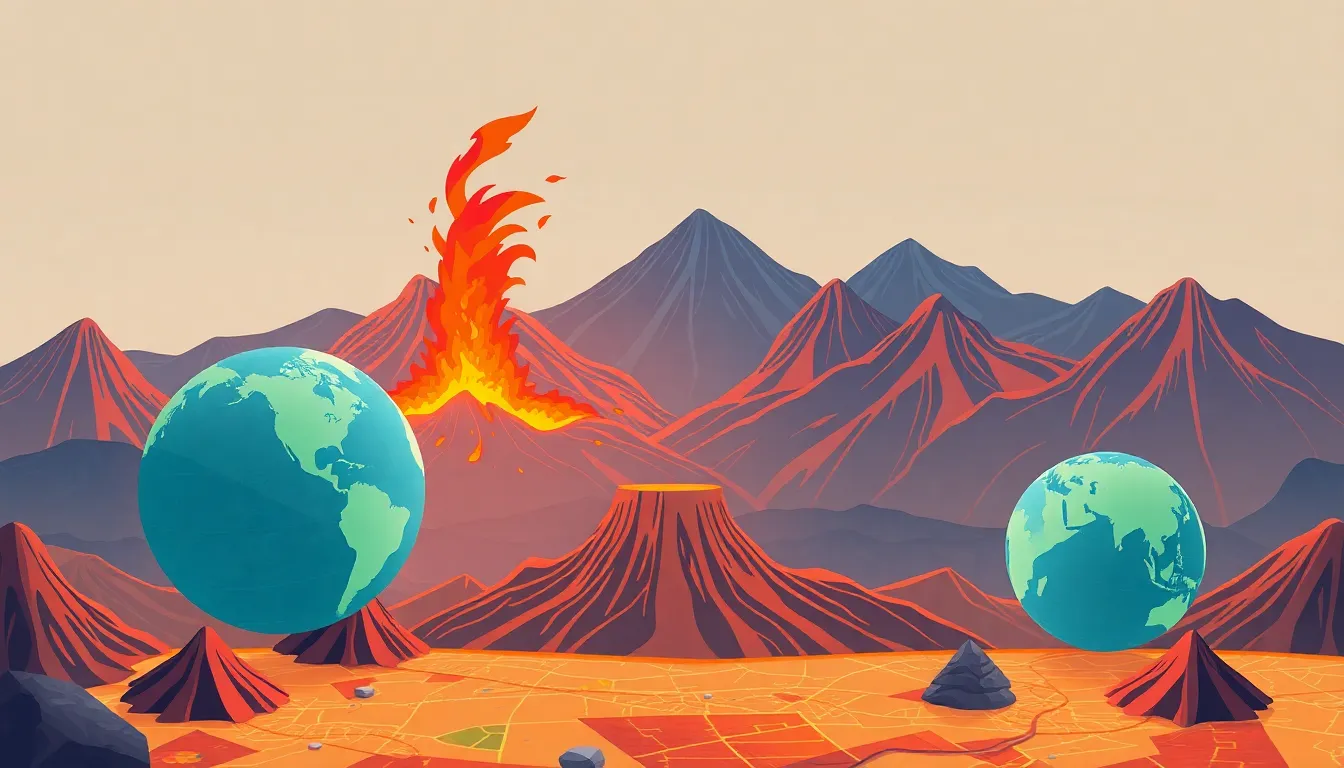
🌋 Volcanoes: Earth’s Fiery Mountains
Introduction
Volcanoes are natural vents that release molten rock, gas, and ash.
They shape continents, create islands, and influence climate patterns worldwide.
Understanding eruptions helps us protect lives and study our planet’s interior.
1. How Volcanoes Form
Magma originates deep inside Earth’s mantle, where temperatures exceed 1,200 °C.
When pressure forces magma upward, it collects in chambers beneath the crust.
If the chamber fills faster than rocks can stretch, it cracks, forming a vent.
The vent becomes a volcano once repeated eruptions build up layers of lava and ash.
2. Types of Eruptions
Effusive Eruptions pour fluid lava that travels great distances, forming smooth basalt flows.
Explosive Eruptions explode violently, blasting ash clouds and pyroclastic fragments into the sky.
The magma’s silica content determines its thickness; high‑silica magma creates more explosive eruptions.
Studying eruption style lets scientists predict hazards and advise emergency planners.
3. Volcanoes and People
Fertile soils around volcanoes support agriculture, feeding millions of people worldwide.
However, ash fall can damage crops, contaminate water, and disrupt air travel.
Geothermal energy from volcanic regions powers homes, reducing reliance on fossil fuels.
Critical thinking: How might a community balance agricultural benefits with eruption risks?
4. Volcanoes in the News
In January 2023, the Hunga‑Tonga submarine volcano erupted, generating a global tsunami warning.
Scientists used satellite imagery to track the ash plume, improving real‑time forecasting.
In 2024, Iceland’s Bárðarbunga volcano released a slow‑moving lava river, attracting tourists safely.
These events show how modern technology connects volcano monitoring with public safety.
Mini Quiz & Simple Experiment
Quiz
- What layer of Earth stores magma before an eruption?
- Name one factor that makes an eruption explosive.
- How does volcanic ash affect aviation?
- Why are volcanic soils often very fertile?
- Which recent eruption helped scientists test satellite monitoring?
Baking‑soda Volcano Experiment
- Place a small bottle on a tray and add 2 tablespoons baking soda.
- Mix ½ cup vinegar, a few drops red food coloring, and 1 teaspoon dish soap.
- Pour the mixture into the bottle and observe the fizzy “lava” flow.
- Discuss how gas pressure in the bottle mimics real volcanic explosions.
Conclusion
Volcanoes teach us about Earth’s inner heat, natural resources, and disaster preparedness.
Explore local volcanic museums, follow live eruption feeds, and ask how geology shapes societies.
Your curiosity can inspire the next generation of geoscientists—keep investigating!